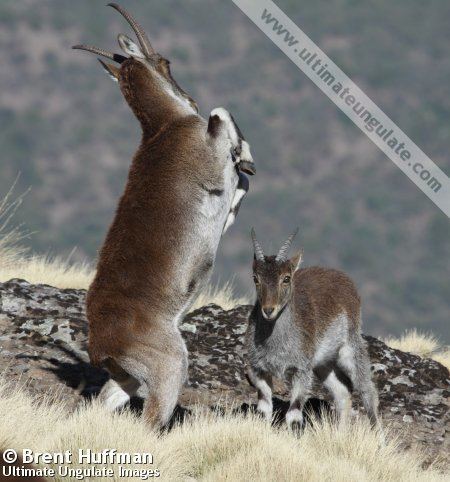Rank Species | Genus Capra Higher classification Goats | |
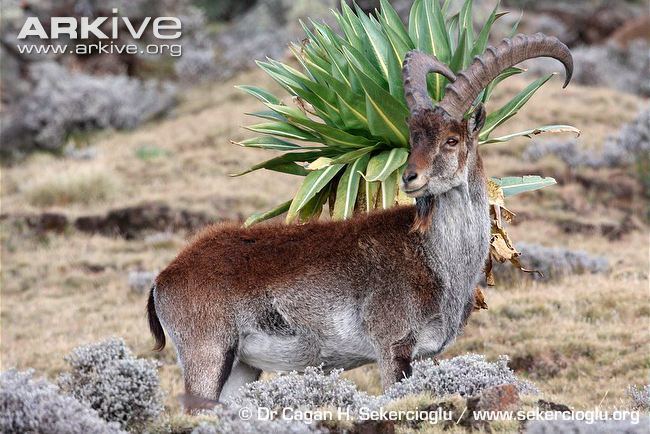 | ||
Similar Mountain nyala, Nubian ibex, Gelada, Goats, Calamian deer | ||
Walia ibex ethiopian capricorn
The walia ibex (Capra walie, Ge'ez: ዋልያ wālyā) is an endangered species of ibex. It is sometimes considered a subspecies of the Alpine ibex. Threats against the species include habitat loss, poaching, and restricted range; only about 500 individuals survived in the mountains of Ethiopia, concentrated in the Semien Mountains, largely due to past poaching and habitat depletion. If the population were to increase, the surrounding mountain habitat would be sufficient to sustain only 2,000 ibex. The adult walia ibex's only known wild predator is the hyena. However, young ibex are often hunted by a variety of fox and cat species. The ibex are members of the goat family, and the walia ibex is the southernmost of today's ibexes. In the late 1990s, the walia ibex went from endangered to critically endangered due to the declining population. The walia ibex is also known as the Abyssinian ibex.
Contents
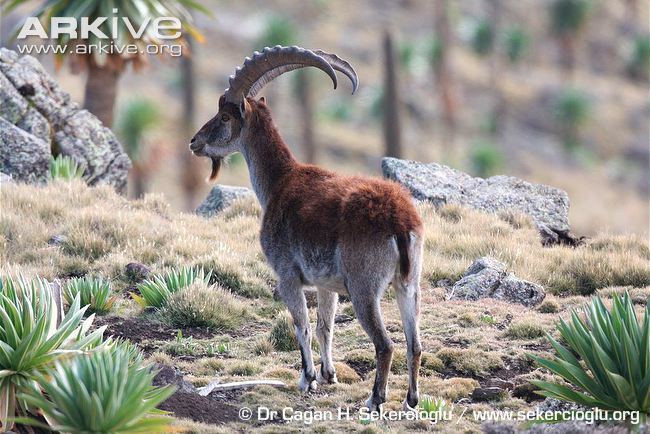
Appearance
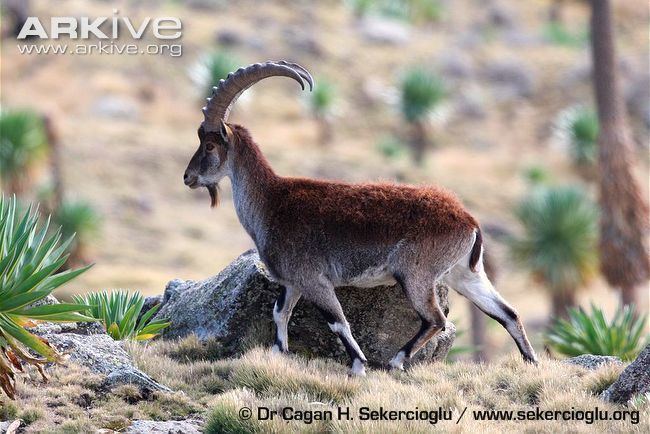
These animals have a chocolate-brown to chestnut-brown coat coloration, greyish-brown muzzle, and a lighter grey in the eyes and legs. The belly and insides of the legs are white, and black and white patterns stretch upon the legs of these animals. The males weigh 80–125 kg (180-280 lb) and have very large horns which curve backwards, reaching lengths up to 110 cm (43 in). These horns are used for dominance disputes between males. The males also have distinguished black beards. The length of the walia ibex beard varies with age. The older males have longer, thicker beards than the young ones . Females also have horns, but they are shorter and thinner. Females are smaller and lighter in color. The horns on both males and females are rigid. The overall size of the walia ibex is smaller and slimmer than the alpine ibex.
Behaviour
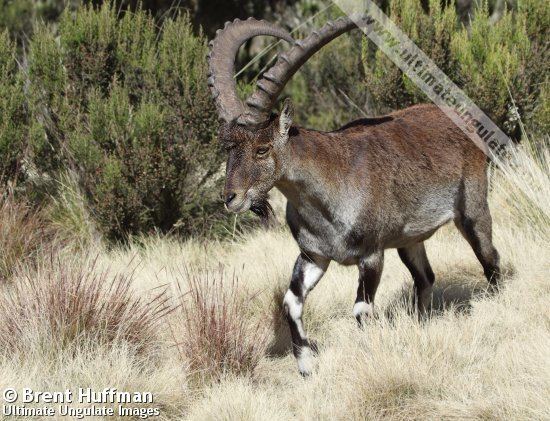
Walia ibex live in herds ranging from five to 20 animals. However the older, more mature males are often more solitary, though they will remain within a short distance of the main herd most times and during the mating season and rejoin with the herd for breeding purposes. Breeding usually takes place during late fall and early winter. The following spring, the female will give birth to one or two offspring. A herd of walia ibex was noted to travel one half of a kilometer up to two kilometers per day.
Habitat and ecology
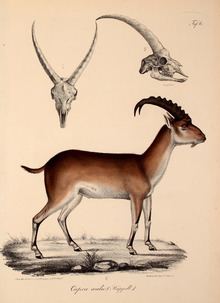
The walia ibex lives in very steep, rocky cliff areas between 2,500 and 4,500 m (8,200 and 14,800 ft) high. Their habitats are mountain forests, subalpine grasslands, and scrub. They are grazers. Their diets include bushes, herbs, lichens, shrubs, grasses, and creepers. They are often seen standing on their hind legs to get to young shoots of giant heath. Walia ibex are most active in the morning and evening, and will rest in the sun on rock ledges. Males live in bachelor groups and females live in groups with their offspring. Mating season is at summit from March to May. Males compete for females by ramming their horns with amazing force. Gestation periods last 150–165 days. They reach sexual maturity at one year of age.
Threats
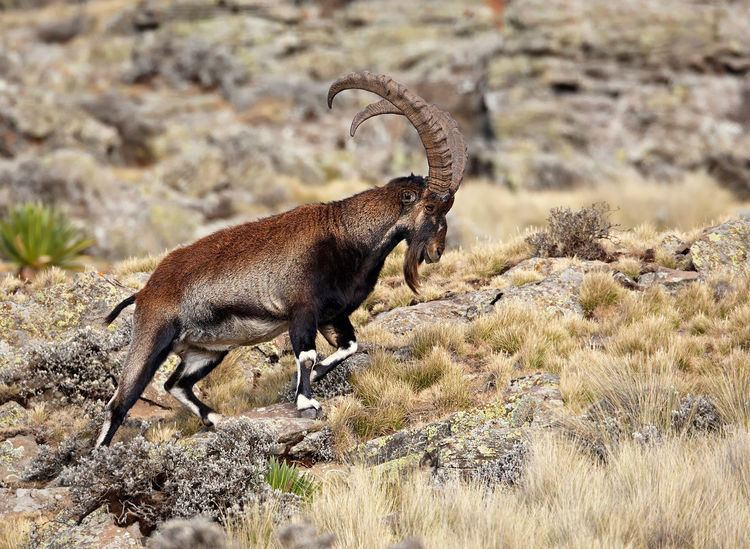
This species is only found in the northern mountains of Ethiopia. Once widespread in the Semien Mountains, the numbers dropped during the 20th century. Only 200–250 animals were surviving in 1994-1996, but recently the population has somewhat increased to about 500 individuals in 2004. Habitat loss and hunting is major threats to the species. The encroaching settlement, livestock grazing, and cultivation are also big problems. Road construction is also fragmenting their habitat. The most important stronghold for their survival is now the 13,600 ha (34,000 acres) sized Semien National Park which was established in 1969. The Walia ibex is considered to be endangered by the IUCN and needs further conservation measures to survive. Since no captive population is kept anywhere in the world, the IUCN recommends capturing a few individuals to form the nucleus of a captive breeding group.
Conservation
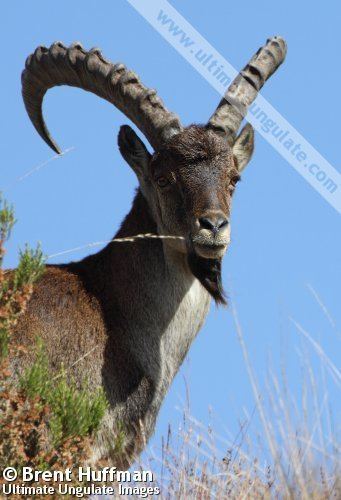
The Walia ibex live exclusively in Ethiopia (eastern Africa). The Semien national park is trying to create wildlife corridors which separate and spread out the Walie ibex and other fauna. These corridors help prevent inbreeding and Walia ibex that are akin. Roads and developed areas can serve as wildlife corridors.
